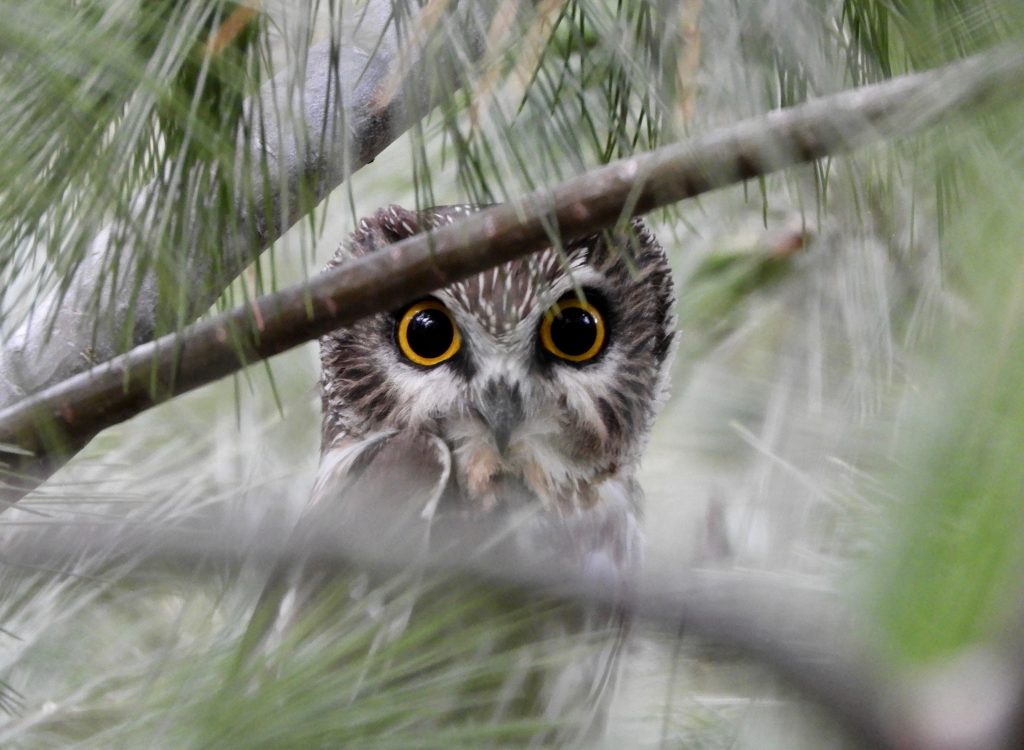January 6 2019. Oakville ON. Eight-fifteen a.m. is still fairly low-light in early January but despite it, three of us made an early start to hike around a large provincial park campground hoping for interesting winter birds. It’s an area of mixed mature woodland and grassland threaded with access roads and punctuated by campsites. We were aware of recent reports of owls so made a point of looking at the sorts of places where owls might hang out by day.
Our morning started well with a Northern Shrike and shortly afterwards a Northern Mockingbird, of the two of them the shrike was perhaps the more notable, they can be few and far between.
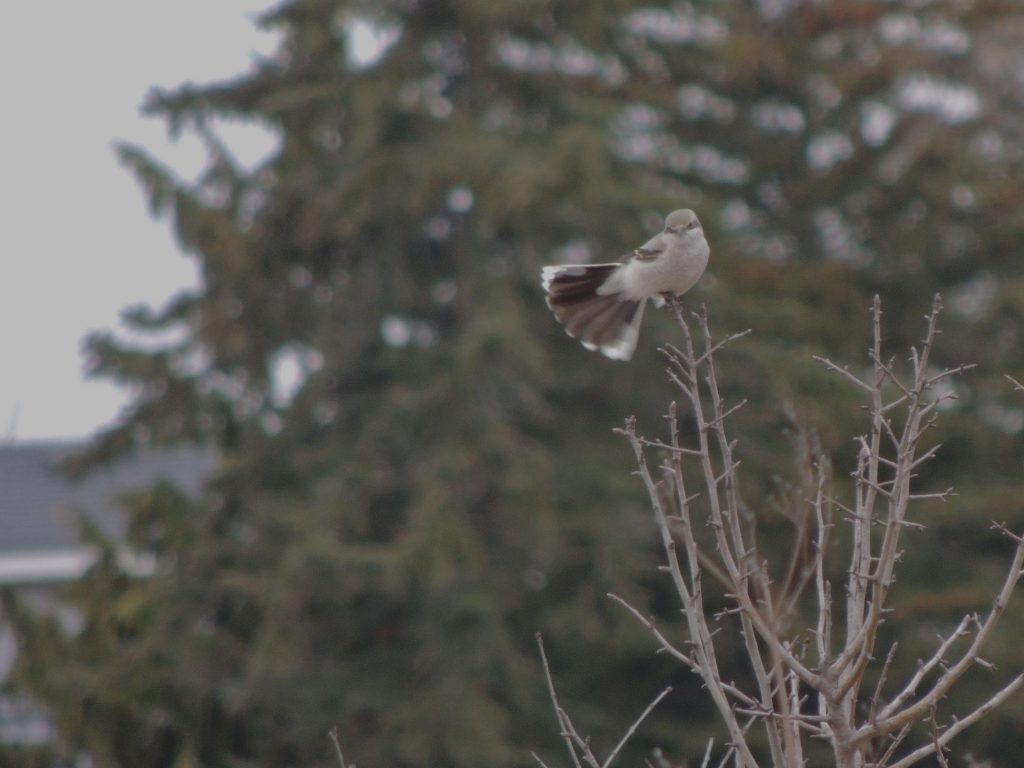
In our meanderings we wandered different directions and astonishingly between us we quite quickly found a Barred Owl and a Great Horned Owl. Like all nocturnal owls they spend daylight hours trying to avoid unwelcome attention, but despite their efforts the Barred Owl was quite conspicuous sitting quietly only about ten meters up in a White Pine.
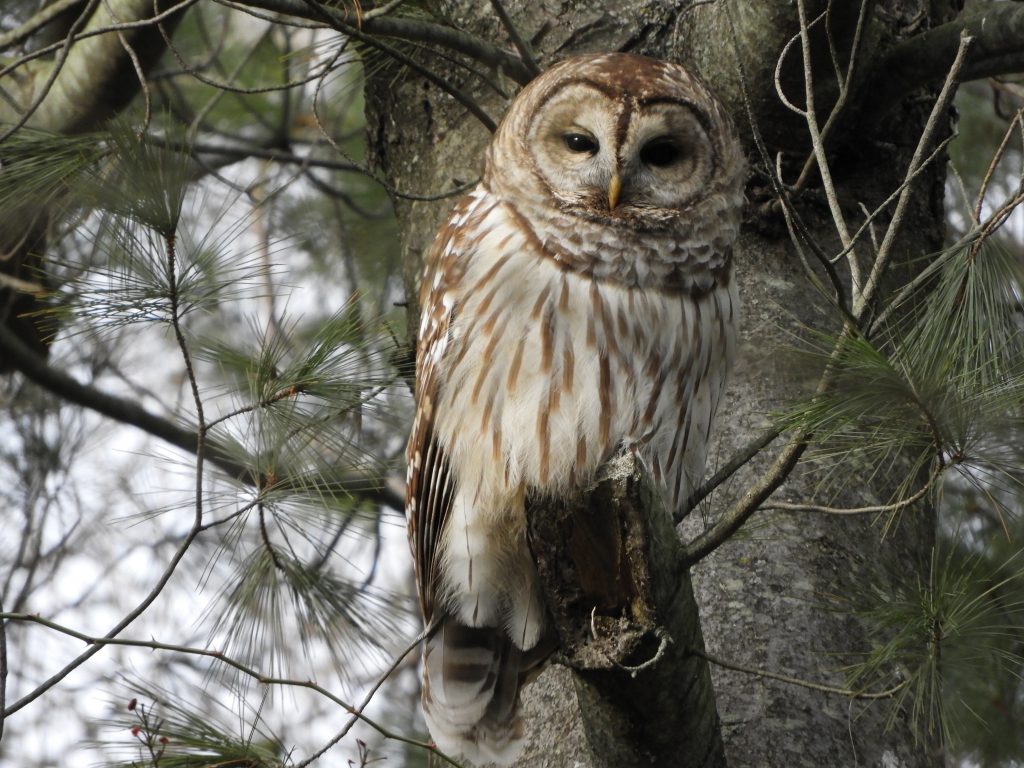
The Great Horned Owl, in another White Pine, was much higher up but hugging close to the trunk and succeeded in being fairly inconspicuous.
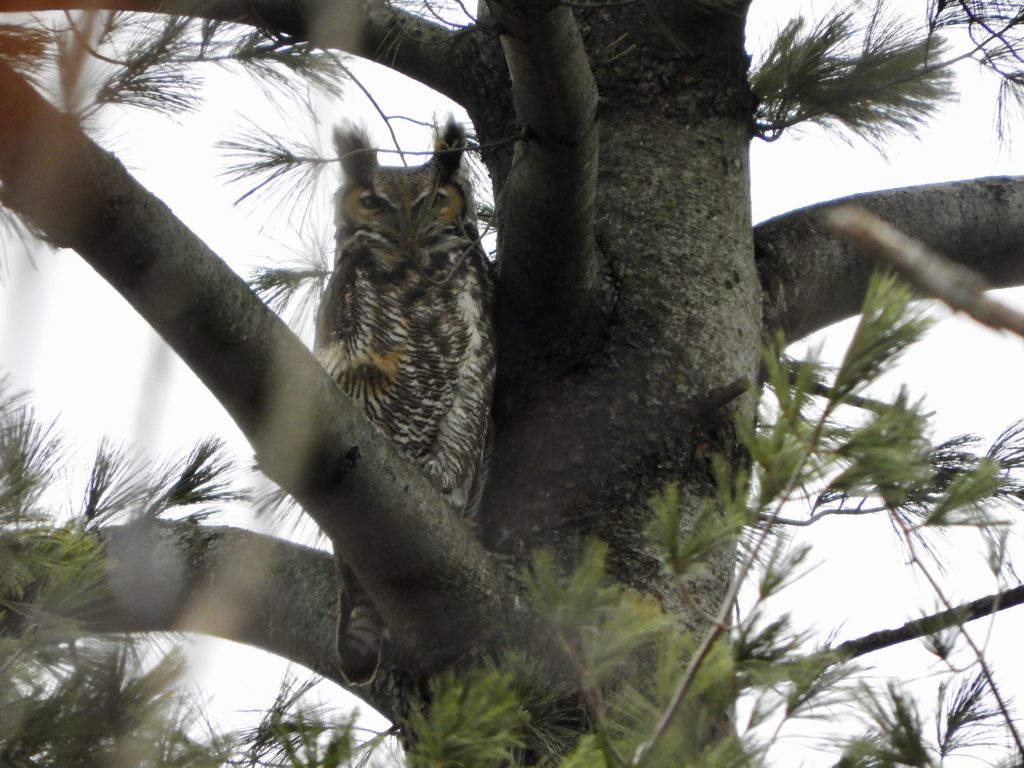
Much trudging and looking later, the sky grew more overcast and a brief flurry of snow marked a drop in temperature, so we started the walk homeward. We struggled around the edge of a pine plantation and as I passed between pine branches admiring the soft sweeping needles I suddenly found myself almost eye to eye with this Northern Saw-whet Owl.
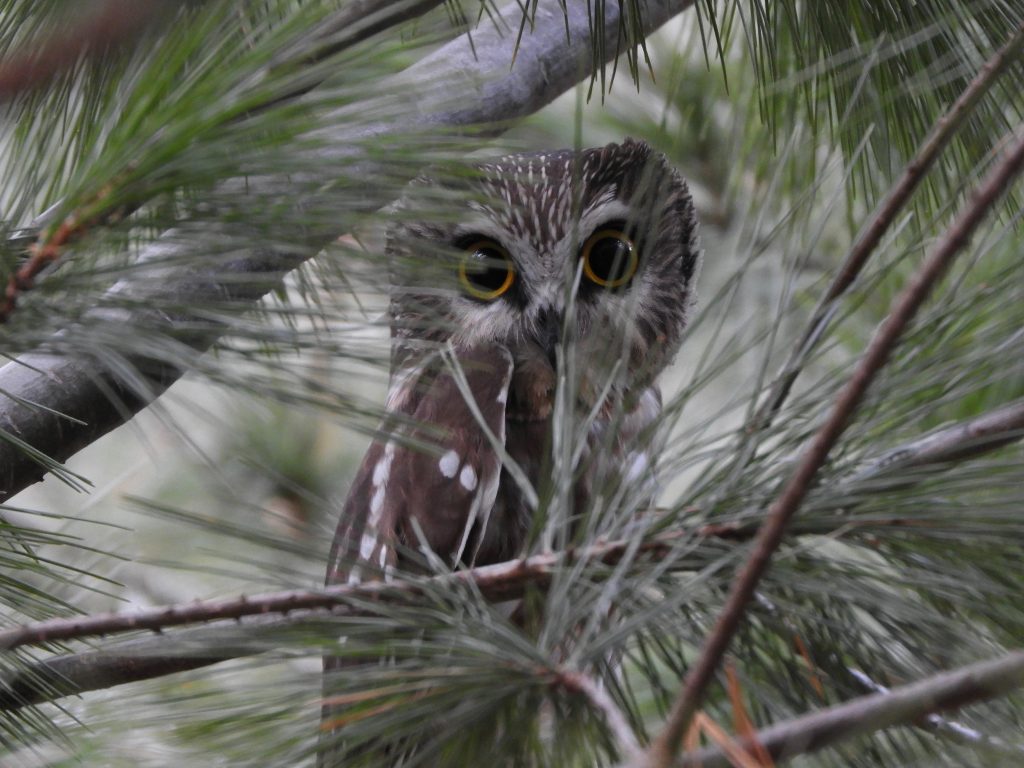
Saw-whets are one of the most common owls in forested habitats but are secretive, so hard to find; today’s was the first Saw-whet I’ve seen unfettered in the wild in forty years. It is one of our smallest owls (about the size of an American Robin) and certainly cute. But for all its cuteness I don’t think we should underestimate its capability as a hunter. Throughout most of its range, it hunts at night from low vantage points and preys on small mammals like mice and voles which it locates unerringly by acute hearing. The species is widespread across southern Canada and northern US states but its populations, distribution, behavior, and breeding biology is not well known.
My discovery delighted us all, a three-owl day is a red-letter day. The Barred Owl and the Great Horned Owls were both great sightings but the day, in the end, belonged to this Northern Saw-whet Owl.
